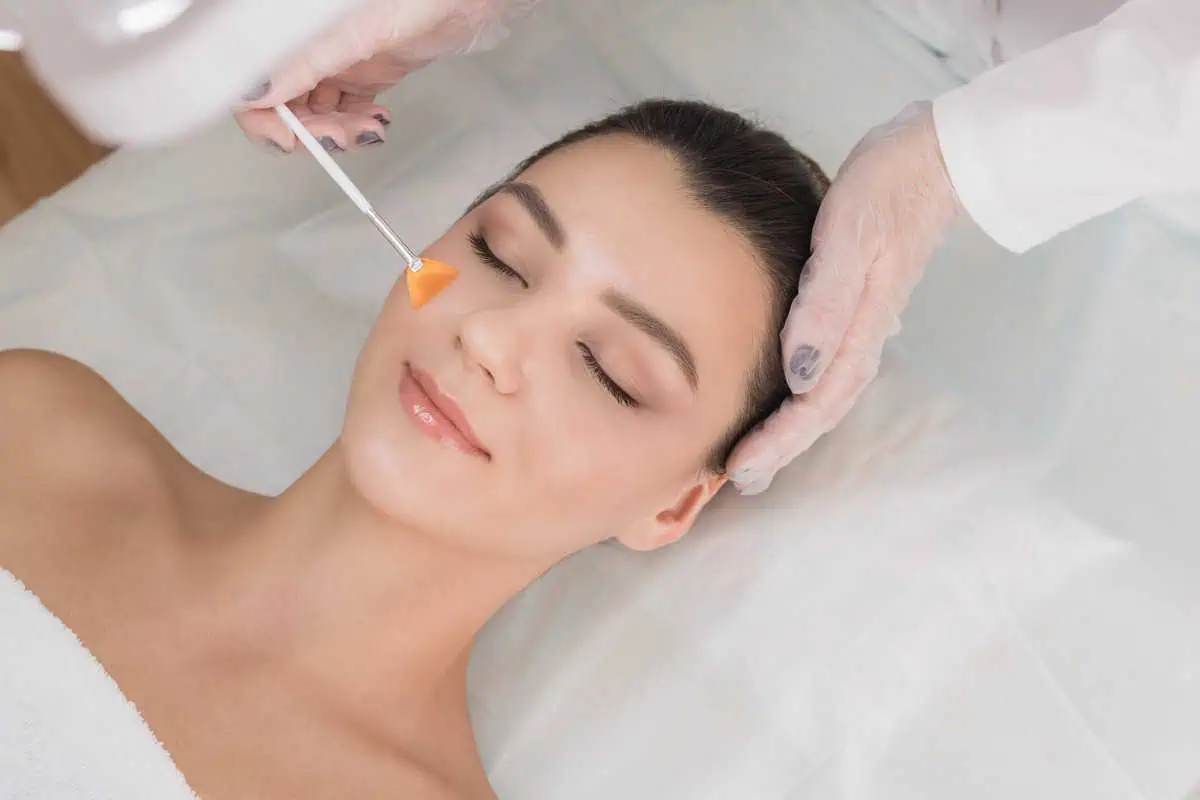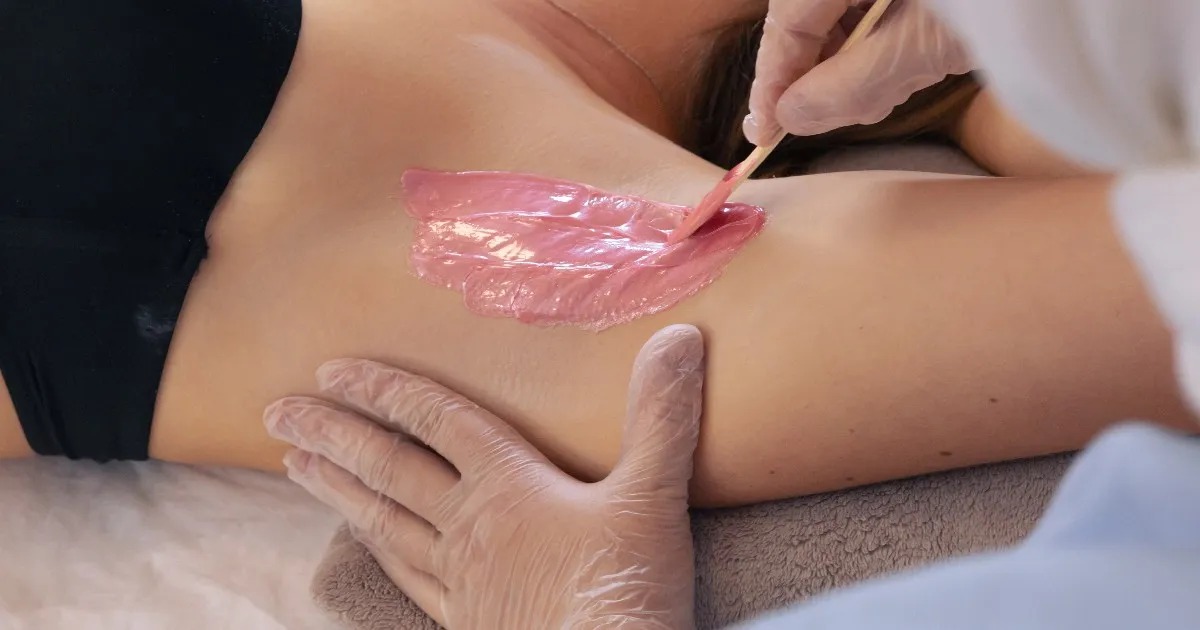Chemical peels are popular for those looking to rejuvenate their skin and achieve a more youthful, radiant appearance. By gently removing the outermost layers of skin, these treatments can address various skin concerns, from fine lines and wrinkles to acne scars and uneven pigmentation. With the ability to refresh and renew the skin, chemical peels are a versatile option for anyone seeking to enhance their complexion. Whether you have minor imperfections or more significant skin issues, chemical peels offer a customizable solution to help you achieve smoother, clearer, and more vibrant skin.
What Are Chemical Peels?
Chemical peels are aesthetic procedures that use a chemical solution to exfoliate and remove the skin’s outer layers in an effort to improve the appearance of the skin. A smoother, more even countenance is the outcome of this process, which encourages the formation of new, healthier skin. Because of its versatility, the technique can be customized to treat a wide range of skin issues, including uneven pigmentation, UV damage, acne scars, fine lines, and wrinkles. Whether you’re seeking a gentle refresh or deeper rejuvenation, our tailored peel options ensure results that match your skin type and goals.
The exfoliation process initiated by chemical peels helps to unclog pores, reduce dark spot formations, and enhance skin texture and tone. Depending on the peel’s specific type and strength, the penetration depth into the skin can vary, making it suitable for different skin issues and desired outcomes.
Specific Chemical Peels Offered
At our clinic, we offer a variety of chemical peels tailored to meet different skin needs and goals. Here’s a closer look at the specific peels we provide:
VI Peel
The VI Peel is a medium-depth peel known for improving skin tone, texture, and clarity. Strong chemicals are used to address a variety of skin issues, such as hyperpigmentation, fine wrinkles, and acne scars. This peel is a great choice for people with hectic schedules because it works well on all skin types and usually requires little recovery time.
Perfect Peel
The Perfect Peel is another medium-depth peel that aims to rejuvenate the skin by minimizing wrinkles, age spots, and sun damage formation. It contains a unique combination of acids and antioxidants, including glutathione, which helps to brighten the skin and promote a more even complexion. The Perfect Peel delivers visible results after just one treatment, with peeling lasting about a week.
Lunch Time Peel
The Lunch Time Peel, also known as a superficial peel, is designed for those seeking a quick refresh without significant downtime. This peel uses mild acids to gently exfoliate the outermost layer of the skin, improving texture and radiance. It’s ideal for treating minor imperfections, such as fine lines and light pigmentation, with the benefit of returning to daily activities immediately after the procedure.
Preparing for a Chemical Peel
Following these steps will help ensure optimal results and a smooth recovery from your chemical peel.
Pre-Treatment Skincare Routine
- Use gentle cleansers and moisturizers.
- Incorporate AHAs or BHAs if recommended.
- Avoid harsh exfoliants and retinoids at least one week prior.
Sun Protection
- Apply a broad-spectrum sunscreen with SPF 30.
- Avoid tanning beds and prolonged sun exposure for two weeks before the peel.
Avoid Certain Procedures and Products
- Refrain from waxing, laser treatments, and microdermabrasion.
- Stop using retinoids, hydroquinone, and other strong actives one to two weeks before the treatment.
Hydration and Nutrition
- Stay hydrated by drinking plenty of water.
- Maintain a balanced diet rich in vitamins and antioxidants.
The Chemical Peel Procedure
The process begins with thoroughly cleansing the skin to remove any dirt, oil, or makeup. This preparation ensures that the chemical solution can penetrate the skin evenly.
Once the skin is cleansed, the practitioner applies the chemical solution using a brush, cotton pad, or sponge. The type of chemical used and its concentration depend on the desired depth of the peel and the specific skin concerns being addressed. During this application, you might experience a tingling or stinging sensation, indicating the solution is working. This sensation is usually mild and temporary, but it can vary depending on the strength of the peel.
For some peels, particularly medium to deep ones, a neutralizing solution is applied after the chemical has been on the skin for the appropriate time. This step stops the chemical reaction and removes the solution from the skin. The practitioner may also use cool compresses or fans to soothe the skin during and after the application.
After the chemical solution is neutralized and removed, a soothing ointment or moisturizer is typically applied to the skin to aid in healing and comfort. Sun protection is emphasized, as the new skin will be susceptible to UV rays.
Aftercare and Recovery
Proper aftercare and recovery ensure the best results and healthy healing after a chemical peel. Here’s a detailed guide on how to care for your skin post-treatment:
Immediate Post-Treatment Care
- Skin Sensitivity and Redness: You should anticipate having sensitive, sunburn-like skin for a few days. To calm your skin, use light moisturizers without fragrance. During this period, stay away from products that include potent, active chemicals like retinoids or AHAs.
Sun Protection
- Sunscreen Use: Even when you’re indoors, protect your freshly treated skin from UV rays by using a broad-spectrum sunscreen with at least SPF thirty.
- Avoiding Sun Exposure: Minimize direct sun exposure as much as possible. When outdoors, wear protective clothing, hats, and sunglasses to shield your skin.
Hydration and Moisturization
- Internal Hydration: Stay moisturized from the inside out by drinking lots of water.
- External Moisturization: Use a gentle moisturizer regularly to maintain skin hydration and reduce dryness and flaking, aiding in smoother healing.
Managing Peeling and Flaking
- Natural Shedding: Allow your skin to peel and flake naturally. Resist the urge to pick at your skin, as this can cause scarring and delay healing.
- Gentle Skincare: Use mild skincare products to support the peeling process without causing additional irritation.
Avoiding Irritants
- Harsh Products: Avoid exfoliants, scrubs, and strong acids until your skin has fully healed. These products can irritate your sensitive skin and prolong the recovery period.
- Soothing Alternatives: Stick to soothing, mild products recommended by your skin care professional to ensure gentle care during recovery.
Follow-Up Care
- Scheduled Check-Ups: Attend follow-up appointments as advised to monitor your skin’s healing and progress. Your skincare professional will provide personalized instructions tailored to your skin type and the specific peel performed.
- Adherence to Guidelines: Follow all aftercare guidelines provided by your skincare professional to achieve the best possible results.
Takeaway
Excited to revitalize your skin and achieve a glowing, youthful appearance? Dream Aesthetics offers a variety of chemical peels customized to your particular skincare requirements. Our team provides you with individualized care and cutting-edge procedures to help you reach your aesthetic objectives.
Don’t put off changing your skin tone! Book an appointment with Dream Aesthetics to find the ideal chemical peel and see what our other services have to offer.






